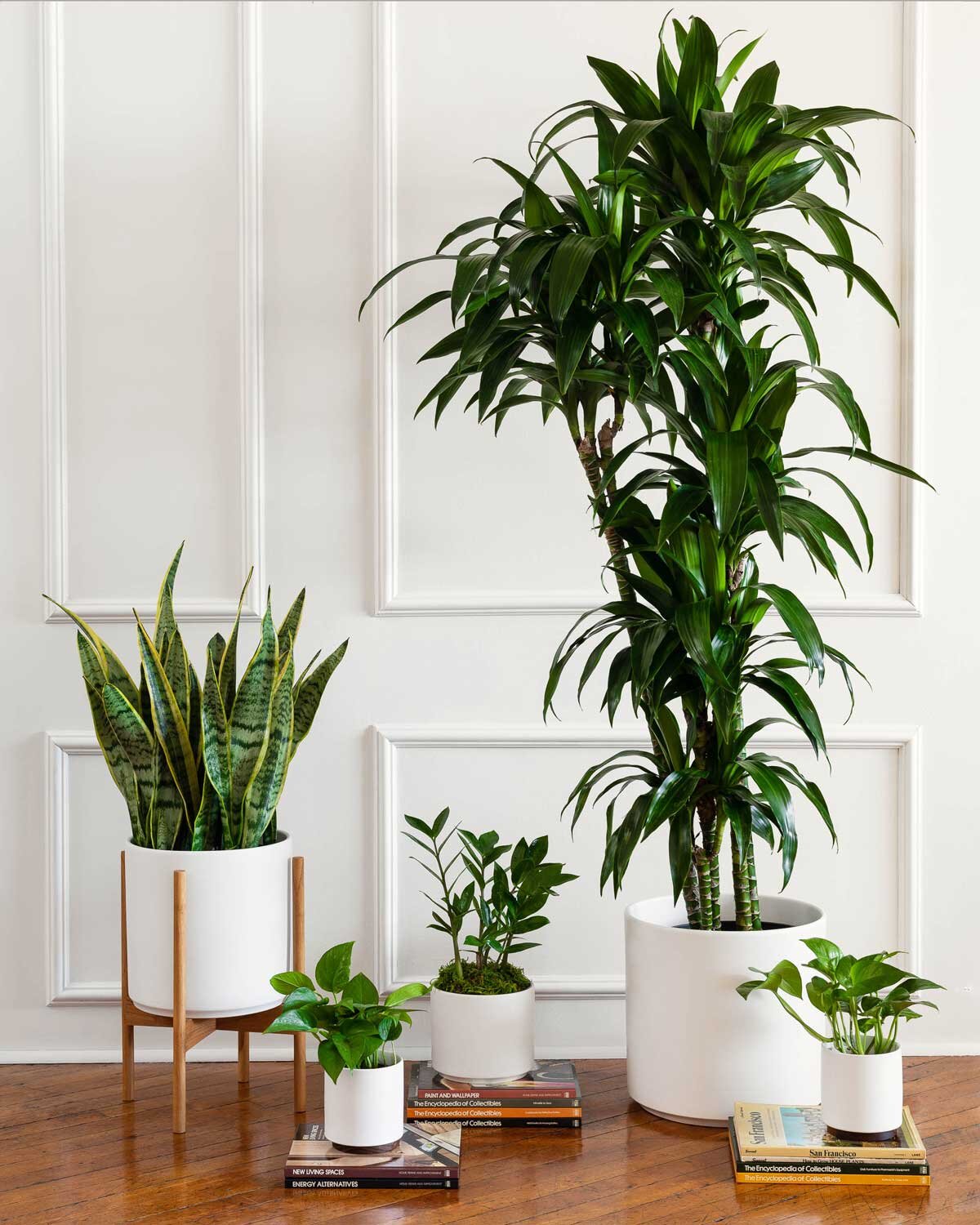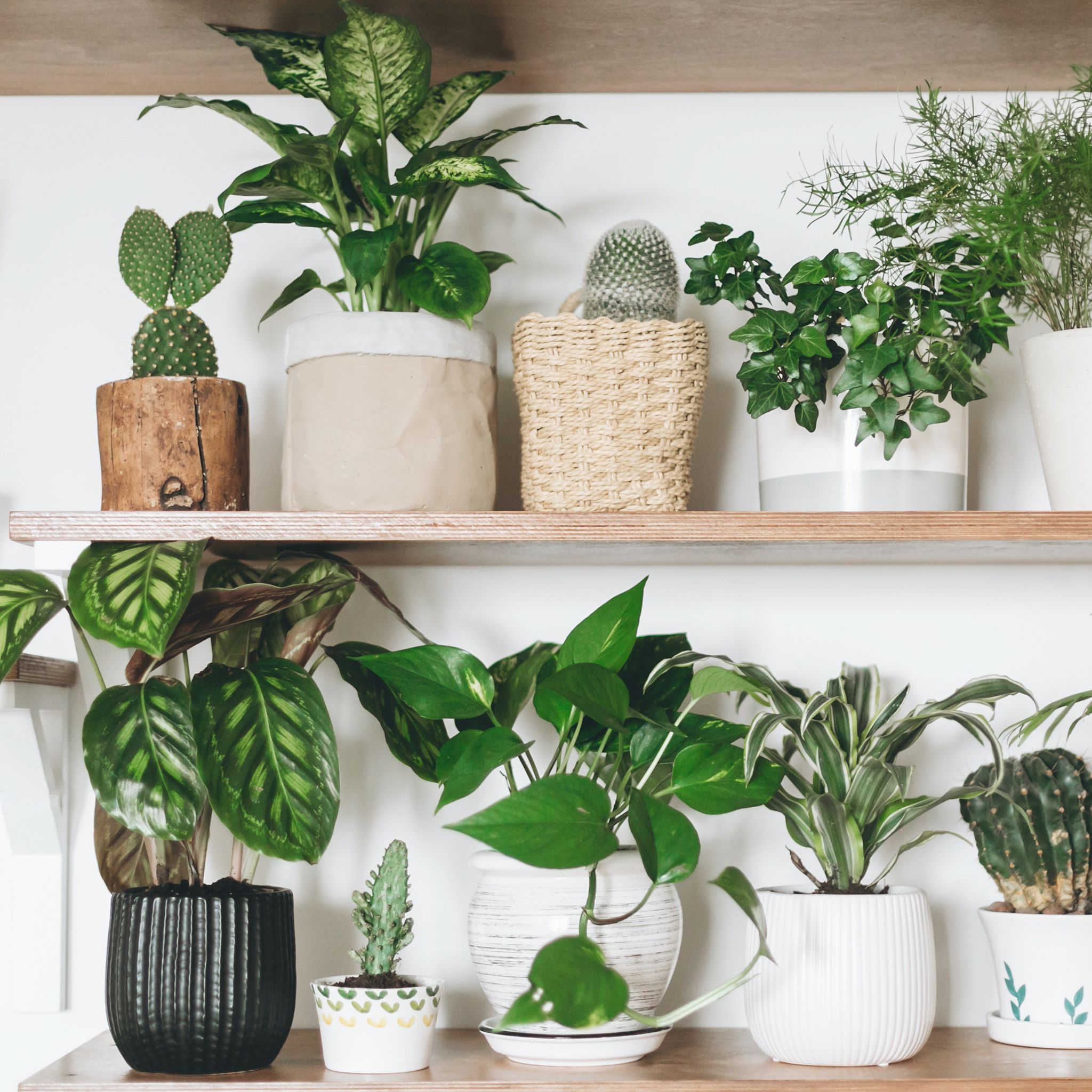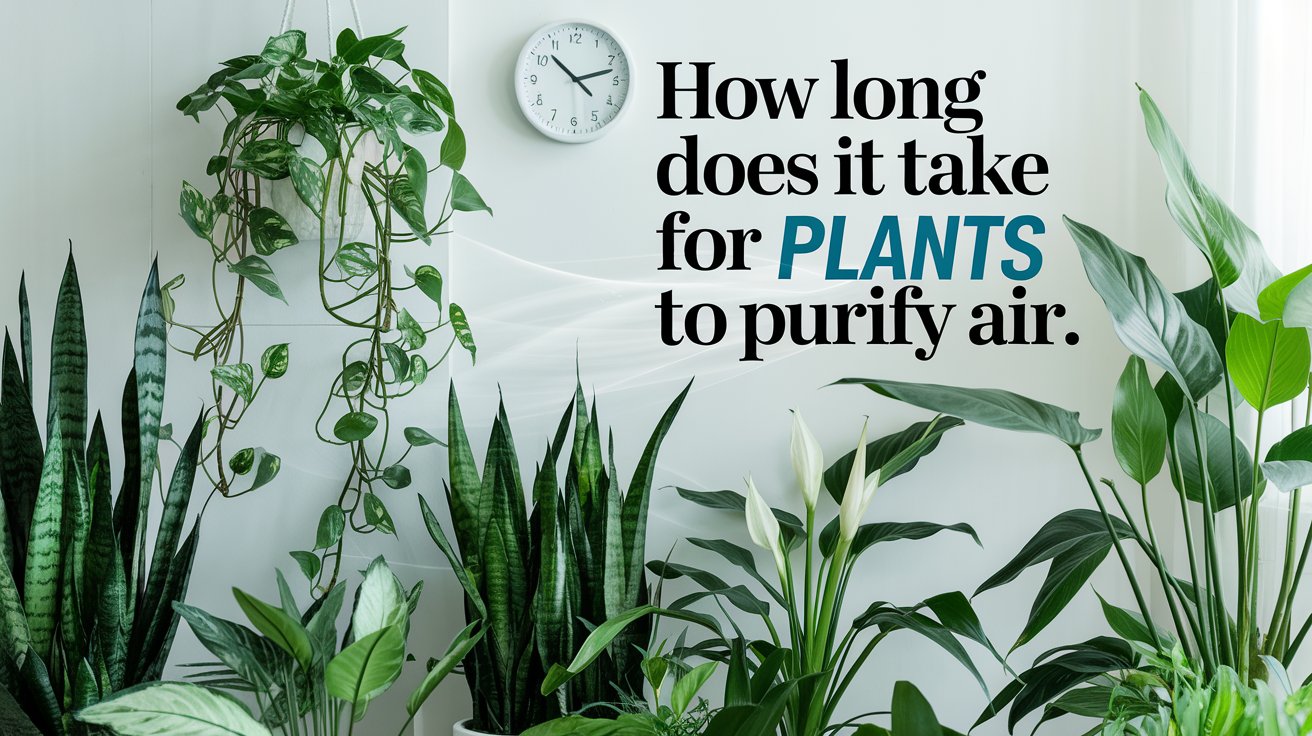Plants can start purifying air within hours, but significant effects may take several days to weeks. The duration varies by plant type and conditions.
Plants play a vital role in improving indoor air quality. They absorb pollutants through their leaves and roots, acting as natural air purifiers. Different plants have varying abilities to remove toxins like formaldehyde, benzene, and trichloroethylene. Factors such as plant species, size, and environmental conditions influence their effectiveness.
Having a variety of plants enhances their air-purifying capabilities. Including plants like spider plants, peace lilies, and snake plants can significantly improve air quality. Regular care and maintenance ensure they remain effective in their role. Incorporating plants into indoor spaces not only beautifies the environment but also promotes healthier living.
Introduction To Plant-based Air Purification
Plants are more than just decorative pieces in our homes. They play a crucial role in purifying the air. Understanding how plants purify air can help us improve our living spaces. Let’s dive into the fascinating world of plant-based air purification.

Credit: www.reddit.com
The Growing Interest
In recent years, there has been a surge in interest in plant-based air purification. People are becoming more aware of the benefits that plants bring to indoor environments. Plants can remove harmful toxins and improve air quality.
Studies show that indoor air can be more polluted than outdoor air. This has led to a growing interest in using plants to clean the air naturally.
| Reasons for Growing Interest | Details |
|---|---|
| Health Benefits | Plants can remove harmful pollutants from the air. |
| Environmental Awareness | People want eco-friendly solutions for cleaner air. |
| Aesthetic Appeal | Plants add beauty to indoor spaces. |
Brief History
The idea of using plants for air purification is not new. In 1989, NASA conducted a study to test the air-purifying abilities of plants. The study found that certain plants can remove toxins like benzene, formaldehyde, and trichloroethylene from the air.
This study sparked interest in using plants for indoor air purification. Since then, many studies have confirmed the effectiveness of plants in cleaning air.
- 1989: NASA’s Clean Air Study
- 1990s: Increased research on plant-based air purification
- 2000s: Popularization of houseplants for air quality
These findings have encouraged more people to use plants in their homes and offices. The concept has gained popularity due to its natural and aesthetic benefits.
The Science Behind Air Purification
Understanding how plants purify air is essential for a healthy home. Plants are nature’s air purifiers. They absorb harmful pollutants and release clean oxygen. Let’s explore how plants clean air and which pollutants they target.

Credit: blog.leonandgeorge.com
How Plants Clean Air
Plants clean air through a process called photosynthesis. During photosynthesis, plants take in carbon dioxide. They also absorb other harmful gases through their leaves.
The plant roots play a vital role too. They break down toxins in the soil. Microbes in the roots help to neutralize harmful substances. This creates a cleaner and healthier environment.
Plants also release moisture into the air. This helps to improve humidity levels. Proper humidity can reduce respiratory problems and skin dryness.
Key Pollutants Targeted
| Pollutant | Source | Effect |
|---|---|---|
| Formaldehyde | Paints, carpets, furniture | Causes headaches, dizziness |
| Benzene | Plastics, detergents | May cause skin irritation |
| Trichloroethylene | Dry cleaning, printing inks | Linked to liver damage |
| Xylene | Vehicle exhaust, paints | Can cause headaches, nausea |
Plants like the Spider Plant and Peace Lily are effective air purifiers. They are known to target these harmful pollutants.
Using plants for air purification is a natural and effective method. It is also aesthetically pleasing and can improve your mood.
Factors Influencing Purification Time
Plants are nature’s air purifiers. They help clean the air in our homes. But, how long does it take for plants to purify the air? The time depends on several factors. In this section, we’ll explore these factors.
Type Of Plant
Different plants have different purification abilities. Some plants are better at cleaning the air. For example, Spider Plants are good at removing formaldehyde. Peace Lilies can filter benzene and trichloroethylene. Here’s a table of some common plants and their purification strengths:
| Plant | Air Pollutant Removed |
|---|---|
| Spider Plant | Formaldehyde |
| Peace Lily | Benzene, Trichloroethylene |
| Snake Plant | Formaldehyde, Benzene |
Size Of The Plant
The size of the plant also affects its purification time. Bigger plants have more leaves. More leaves mean better air purification. A small plant cleans a small area. A large plant can clean a larger area. Consider the following points:
- Small plants are good for desks and small rooms.
- Medium plants are suitable for bedrooms.
- Large plants work well in living rooms and offices.
By choosing the right type and size of plant, you can improve your indoor air quality. Remember, the best plant for you depends on your space and needs.
Effective Indoor Plants For Air Cleaning
Indoor plants can improve air quality in your home. They absorb toxins and produce oxygen. Some plants are better at purifying air than others. Let’s explore the best options for clean air.
Top Purifying Plants
Here are the top plants known for their air-purifying abilities:
- Spider Plant – Removes formaldehyde and xylene.
- Snake Plant – Filters benzene, formaldehyde, and trichloroethylene.
- Peace Lily – Eliminates ammonia, benzene, and formaldehyde.
- Aloe Vera – Clears formaldehyde and benzene.
- Boston Fern – Known for removing formaldehyde.
Low-maintenance Options
If you prefer plants that need little care, consider these:
- Spider Plant – Needs minimal light and water.
- Snake Plant – Tolerates low light and infrequent watering.
- Aloe Vera – Thrives in bright, indirect sunlight and dry soil.
- Pothos – Grows well in low light and can tolerate neglect.
- ZZ Plant – Survives in low light and requires little watering.
These plants not only purify the air but are also easy to maintain. They are perfect for busy lifestyles or beginner gardeners.
Case Studies And Research Findings
Understanding how long it takes for plants to purify air involves delving into various case studies and research findings. These studies shed light on the effectiveness and timeframe of air purification by plants.
Nasa Clean Air Study
The NASA Clean Air Study is a landmark research project. It aimed to identify the best plants for filtering indoor air. NASA found that certain plants can remove significant amounts of harmful chemicals like benzene, formaldehyde, and trichloroethylene.
According to the study, some plants can start purifying the air in just 24 hours. They continue to work effectively over time. Notable plants from the study include:
- Spider Plant (Chlorophytum comosum)
- Peace Lily (Spathiphyllum)
- Golden Pothos (Epipremnum aureum)
These plants have shown strong capabilities in removing toxins. The study concluded that having one plant per 100 square feet of space can enhance air quality significantly.
Recent Research
Recent research supports NASA’s findings but adds more details. Studies show that plant size and number affect the air purification speed.
For instance, a 2020 study found that larger plants purify air faster. The study used a variety of plants, including:
- Rubber Plant (Ficus elastica)
- Boston Fern (Nephrolepis exaltata)
They found that these plants could reduce airborne toxins by up to 60% in a week. The study suggested placing multiple plants in a room for better results.
Another research project in 2021 examined the role of plant density. They concluded that more plants in a confined space improve air quality faster. Here’s a quick overview:
| Plant Type | Time to Purify Air |
|---|---|
| Spider Plant | 24-48 hours |
| Peace Lily | 24-48 hours |
| Rubber Plant | 48-72 hours |
| Boston Fern | 48-72 hours |
These findings emphasize the importance of plant selection and density. They show that plants can be a quick and effective solution for indoor air purification.

Credit: www.countryliving.com
Practical Tips For Maximizing Air Purification
Plants can help purify the air in your home. But you need to know how to place and care for them. This helps them clean the air faster and better. Here are some tips for maximizing air purification with your plants.
Optimal Placement
Place plants in rooms where you spend the most time. This can be your living room or bedroom. Make sure to put plants near windows. This gives them enough light to grow well. You can also place them near electronics. Plants can absorb harmful particles from electronic devices.
| Location | Reason |
|---|---|
| Living Room | High activity area |
| Bedroom | Where you rest |
| Near Windows | Good light source |
| Near Electronics | Absorbs harmful particles |
Care And Maintenance
Taking care of your plants is very important. Water them regularly but do not overwater. Too much water can harm the plants. Use good soil that allows the roots to breathe. Fertilize the plants every few weeks. This gives them the nutrients they need to grow strong.
- Water regularly but not too much.
- Use good quality soil.
- Fertilize every few weeks.
Check for pests on the plants. Pests can make plants weak. Remove any dead leaves or flowers. This helps the plant focus its energy on new growth. Clean the leaves with a damp cloth. Dust on leaves can block light and slow down air purification.
- Check for pests.
- Remove dead leaves or flowers.
- Clean leaves with a damp cloth.
Comparing Plants To Other Air Purifiers
Plants can purify the air naturally. But how do they compare to other air purifiers? Let’s look at their efficiency and cost-effectiveness.
Efficiency
Plants remove toxins slowly. They work by absorbing pollutants through their leaves. This process is called phytoremediation.
Electronic air purifiers use filters or ionization. They capture particles quickly. They can remove up to 99.97% of particles in the air.
| Air Purifier Type | Efficiency |
|---|---|
| Plants | Slow, natural process |
| Electronic Purifiers | Fast, up to 99.97% efficiency |
Plants are good for small spaces. Electronic purifiers are better for quick results in large areas.
Cost-effectiveness
Plants are usually cheap. You can buy them from local nurseries. They also need less maintenance.
Electronic air purifiers are expensive. They need regular filter changes. This can add to the cost over time.
- Plants: Low initial cost, minimal maintenance
- Electronic Purifiers: High initial cost, ongoing maintenance
Plants also add beauty to your home. They can improve your mood and productivity.
Electronic purifiers take up space. They can be noisy. Some models even consume a lot of electricity.
Both options have their pros and cons. Choose based on your needs and budget.
Conclusion And Future Prospects
Understanding how long it takes for plants to purify air is vital. Plants play a significant role in maintaining a healthy indoor environment. This final section will summarize the key points discussed and explore potential developments in this field.
Summary Of Key Points
Plants like the Spider Plant and Peace Lily are excellent air purifiers. These plants can remove toxins such as formaldehyde and benzene. It takes about 24 hours to start seeing significant changes in air quality. Factors like the size of the plant and the room also matter. Larger plants and smaller rooms see quicker results. Regular maintenance of plants ensures continuous air purification.
Potential Developments
Future research may focus on genetically modified plants. These plants could purify air more efficiently. Technology may also play a role. Smart sensors could monitor air quality and plant health. This could lead to automated systems for optimal air purification.
Researchers are exploring plant combinations for better results. Different plants may target different toxins. Combining them could lead to a more effective purification system. This could revolutionize indoor air quality management.
There is also interest in using plants in urban planning. Integrating plants into buildings and public spaces could improve city air quality. This could have a positive impact on public health.
| Plant Name | Effective Against | Time to Purify |
|---|---|---|
| Spider Plant | Formaldehyde | 24 hours |
| Peace Lily | Benzene | 24 hours |
| Boston Fern | Xylene | 48 hours |
These developments offer exciting prospects for the future. They promise a healthier and cleaner indoor environment for everyone.
Frequently Asked Questions
How Many House Plants Does It Take To Purify The Air?
NASA suggests 15-18 house plants can purify the air in a 1,800 square foot home. Choose varieties like spider plants.
Do Air Purifying Plants Really Work?
Yes, air purifying plants can improve indoor air quality. They absorb pollutants and release oxygen, enhancing overall air freshness.
Which Plant Purifies The Air The Most?
The Snake Plant is known for purifying air the most. It removes toxins like formaldehyde and benzene efficiently.
Is It Healthy To Sleep In A Room With Plants?
Yes, sleeping with plants can be healthy. They purify air, reduce stress, and improve sleep quality. Choose non-toxic varieties.
Conclusion
Understanding the time it takes for plants to purify air helps in making informed choices for indoor greenery. Different plants have varying purification rates, so select accordingly. Incorporating plants into your living space can significantly improve air quality. Embrace the natural air purifiers and enjoy a healthier environment.

My mission is to help you bring the beauty of nature indoors with expert advice, detailed plant care guides, and creative design ideas.




